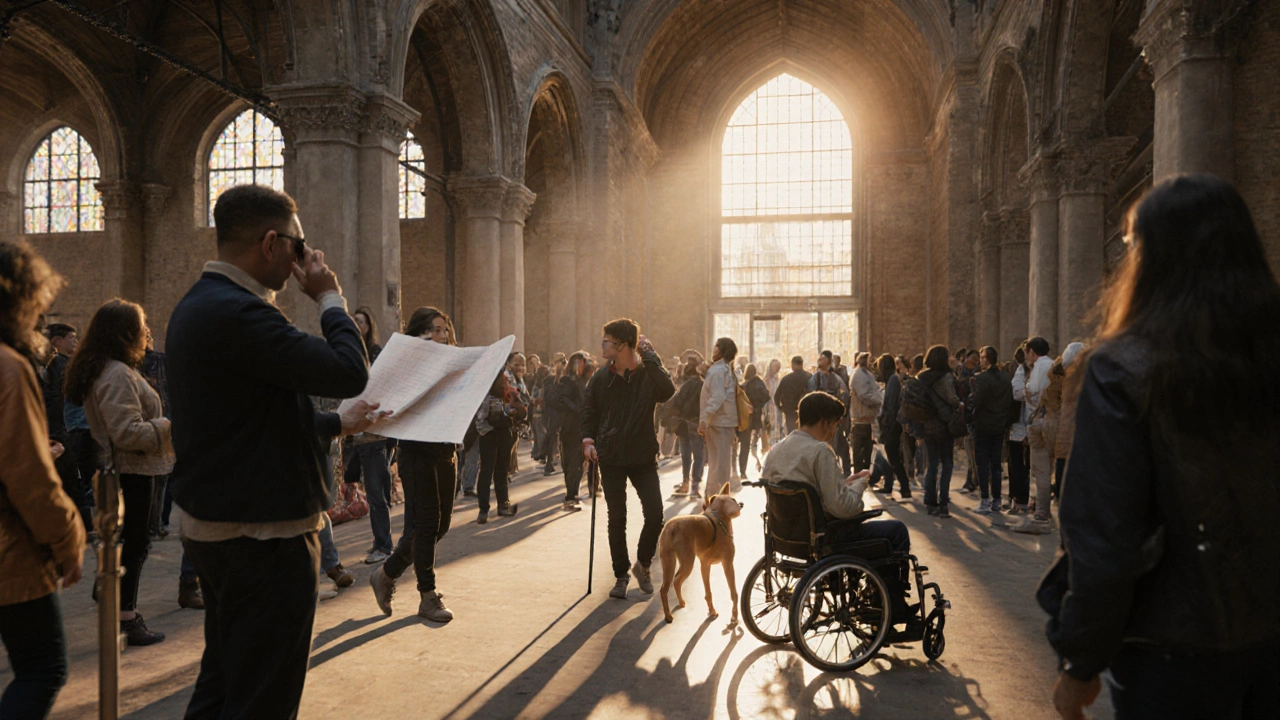
Every year in September, London transforms into an open book of architecture. For one weekend, hundreds of buildings - from hidden courtyards and Victorian warehouses to modern skyscrapers and secret government offices - throw open their doors to the public. Open House London 2025 is happening again, and if you’ve never been, you’re missing out on one of the city’s most unique free experiences.
What Is Open House London?
Open House London isn’t a festival with stages or food stalls. It’s a chance to walk through spaces you’d normally never see. Think of it as a city-wide behind-the-scenes tour. You can step inside the Bank of England’s vaults, climb the tower of a 1930s Art Deco cinema, or peer into the private gardens of Mayfair townhouses. The event runs for two days and includes over 800 sites across Greater London. Most are free. A few require advance booking, and those are the ones you need to plan for.
The event started in 1992 as a small experiment by a group of architects. Today, it’s organized by the charity Open City and draws more than 100,000 visitors each year. It’s not just for architecture fans - it’s for curious locals, tourists, students, and anyone who’s ever wondered what’s behind that grand door on a quiet street.
Why 2025 Is Different
This year, Open House London is celebrating its 33rd edition with a focus on sustainability and accessibility. Over 120 new buildings are opening for the first time, including the newly restored 1920s swimming pool at the former Clapham Baths, the carbon-neutral offices of the London Borough of Islington’s new HQ, and the rooftop garden of the 2024-built eco-housing block in Peckham.
For the first time, every listed site includes audio descriptions and tactile floor plans for visually impaired visitors. There are also guided tours in British Sign Language and free shuttle buses running between key clusters of buildings in East London and Southwark. The event is also partnering with local schools to bring 5,000 students on free educational visits during the week before the weekend event.
How to Register for Popular Sites
Not every building lets you just walk in. The most popular spots - like the Gherkin, the Royal Academy of Arts, and the Thames Barrier control room - require pre-registration. These slots fill up fast. You can’t just show up on Saturday morning and expect to get in.
Registration opens on July 1, 2025, at 9 a.m. sharp on the Open House London website. You’ll need to create a free account ahead of time. Once registered, you can start booking tours. Each booking gives you a 30-minute time slot. You can book up to five sites per person.
Pro tip: Set a reminder for 8:45 a.m. on July 1. The site gets overloaded the second registration opens. Don’t wait until noon - by then, the Gherkin and the Shard will already be full. The best strategy is to pick one or two must-see sites and lock them in first, then fill in the rest with lesser-known spots you’ve never heard of.

Top 5 Must-Visit Sites in 2025
- The Gherkin (30 St Mary Axe) - Book early. Only 200 spots available per day. The view from the 40th floor is unmatched.
- Clapham Baths (Restored 1920s Swimming Pool) - A hidden gem. The original mosaic tiles and vintage changing rooms are untouched.
- Thames Barrier Control Room - See how London protects itself from flooding. Only open during Open House.
- St. Pancras Renaissance Hotel’s Secret Tunnel - Walk the underground passage once used to move luggage between trains and the hotel.
- Peckham Rye Library (2024 Eco-Build) - The first public building in London to run entirely on solar and geothermal energy.
What to Bring and How to Plan Your Day
You won’t need tickets for most sites - just your phone with your booking confirmation and a good pair of walking shoes. Many buildings have stairs, no elevators, or uneven floors. Some require you to remove your shoes. Always check the site details before you go.
Plan your route by neighborhood. Don’t try to do the whole city in one day. Pick one area - like Southwark, Camden, or the City - and focus on it. Use the Open House London app (free to download) to map your stops. It shows real-time wait times and walking directions between sites.
Bring water. Some locations don’t have cafes. Pack a snack. And don’t forget your camera - but be respectful. Many interiors are delicate, and flash photography is banned in historic spaces.
What’s Not Allowed
Some rules are strict, and they’re there for a reason. No large bags or backpacks. No drones. No pets (except service animals). No group tours without prior approval. And no bringing food or drink into heritage interiors. If you’re caught violating these rules, you’ll be asked to leave - no second chances.
Also, don’t assume you can just wander into a building if it’s open. Many sites have timed entry. If you arrive 10 minutes after your slot, you won’t be let in. The staff are there to manage crowds, not to bend rules.

Alternatives If You Miss Registration
Not everyone gets a slot. That’s okay. Over 650 sites don’t require booking at all. You can walk in anytime during opening hours. Look for:
- Public libraries with historic reading rooms
- Churches with medieval stained glass
- Former industrial sites turned into creative hubs
- University buildings open to the public
- Local council offices with public art installations
Check the Open House map for sites marked "No Booking Required." These are often just as interesting - and way less crowded. The old Royal Mail sorting office in Whitechapel, for example, is open without registration and has a free pop-up exhibition on Victorian postal history.
What to Do After the Weekend
Open House London doesn’t end when the weekend does. Many of the buildings you visit will have ongoing public events - lectures, workshops, or monthly open days. Sign up for Open City’s newsletter. They send out monthly updates on architecture walks, conservation volunteering, and student-led tours.
If you loved one particular building, look up its architect or owner. Many firms offer paid guided tours year-round. Some even let you book private visits for small groups. The cost? Usually under £20. It’s a great way to keep exploring.
And if you’re a student, teacher, or community organizer - consider applying to be a volunteer guide next year. You don’t need to be an architect. You just need to be curious and willing to learn. Thousands of locals do it every year.
Frequently Asked Questions
Do I need to pay for Open House London?
No. Open House London is completely free. You don’t pay for entry to any site. The only cost might be transport or a coffee. Some buildings offer optional donations, but you’re never required to give money.
Can I bring my kids?
Yes. Children are welcome at all sites. Many locations have special family-friendly tours with scavenger hunts and hands-on activities. Some buildings have low-height windows or tactile models designed for younger visitors. Just keep an eye on them - not all spaces are child-proof.
What if I can’t get a booking for the Gherkin or Shard?
Don’t worry. There are dozens of other buildings with equally stunning views and stories. Try the Bloomberg European Headquarters - it has a free public gallery with interactive displays on urban design. Or visit the historic Pumping Station in Crossness - it’s a Victorian engineering marvel with steam engines still running.
Is Open House London accessible for people with disabilities?
Yes. In 2025, every listed site includes accessibility info: wheelchair access, audio guides, BSL tours, and tactile maps. If a building isn’t fully accessible, they’ll say so clearly on the listing. Open City also offers a free shuttle service for visitors with mobility needs between major clusters.
Can I take photos inside?
Yes - but only without flash. Some historic interiors ban photography entirely, especially if there’s fragile artwork or lighting-sensitive materials. Always check the sign at the entrance. If in doubt, ask a volunteer. They’re happy to help.
How do I know which buildings are open in 2025?
The full list of 800+ sites is published on July 1, 2025, on the Open House London website and app. You can filter by area, type, accessibility, and booking requirements. The app updates in real time with last-minute closures or extended hours.